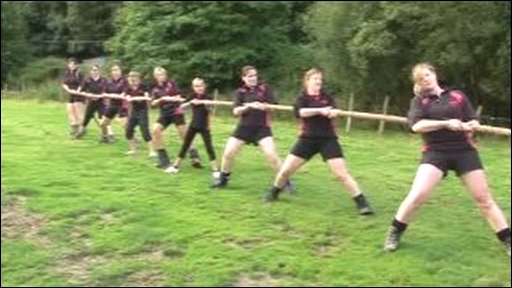 The blog entry on Root Causes of ‘Fire-Fighting’ explains how poor requirements and insufficient team synchronization mechanisms can lead to constant fire-fighting. When faced with constant fire-fighting your project starts spinning out of control and code development will slow to a crawl. At this time, management’s first instinct is to throw more developers at the problem.
The blog entry on Root Causes of ‘Fire-Fighting’ explains how poor requirements and insufficient team synchronization mechanisms can lead to constant fire-fighting. When faced with constant fire-fighting your project starts spinning out of control and code development will slow to a crawl. At this time, management’s first instinct is to throw more developers at the problem.
While adding resources to a late project seems like a logical thing to do, it generally makes the problem worse, i.e. leads to more fire fighting and reduced productivity. While it seems counter-intuitive, actually throwing people off the project is more likely to make your project move faster. Fred Brooks, author of The Mythical Man-Month calls this principle Brook’s law.
Different Types of Team Activity
Before addressing why adding resources slow down late projects, let’s look at the different types of team activities and their inherent productivity characteristics. When teams of people perform tasks they fall into one of three different categories: 1) additive, 2) disjunctive, and 3) conjunctive.
In an additive activity, the productivity of the group is determined by adding up the productivity of each of the individuals comprising the team, i.e. team productivity = Σ (individual productivity) . One additive activity is tug-of-war where the productive output of your team is equal to the sum of the pulling force of all the members of your team. Another additive activity would be a team of people painting a house.
Managers throw additional people into late projects on the assumption that coding is an additive activity, it isn’t; we’ll cover why in a second.
In a disjunctive activity, the productivity of the group is determined by the strongest member of the team, i.e. team productivity = max(individual1, individual2, …, individualn). A disjunctive activity would be playing Trivial Pursuit in large teams, if team gets the answer right when any team member gets it right. In software projects disjunctive activities occur when there is a very specific technical problem to solve. In the meeting, whoever solves the problem first will solve it for the entire team.
In a conjunctive activity, the productivity of the group is determined by the weakest member of the team, i.e. team productivity = min(individual1, individual2, …, individualn). Conjunctive activities are equivalent to the weakest link in a chain. Security is a conjunctive activity, you are only as secure as the weakest part of your security architecture. Quality is a conjunctive activity and this is why we say “quality is everyone’s job“. It only takes one poor quality component to reduce the quality of an entire product.
When an organization is unaware of critical conjunctive activities, they are likely to have all kinds of execution problems.
Understanding Requirements is a Conjunctive Activity
 Software projects get into a fire fighting mode because there is a poor understanding of the requirements from a team perspective. Whether the requirements were well written or not, if those requirements are poorly understood by the team then you start playing 6 blind men and the elephant.
Software projects get into a fire fighting mode because there is a poor understanding of the requirements from a team perspective. Whether the requirements were well written or not, if those requirements are poorly understood by the team then you start playing 6 blind men and the elephant.
This is where you discover that everyone in your project has a different perspective on what the system is supposed to do and how it is supposed to do it. The fire-fighting mode is nothing more than a set of meetings to resolve differences and solve problems caused by divergent beliefs on the project.
Understanding the requirements is a conjunctive activity. Your productivity is only as good as the weakest understanding in the team. The developer on the team with the weakest understanding of the requirements is probably generating the most defects. If QA does not understand the requirements (if they exist) then they will be generating all kinds of false positives when they are unsure the software is behaving properly.
With this perspective, it is easy to see how adding people to a late project will cause it to be later. The additional developers and QA being added to the project will have the poorest understanding of the requirements of all the team members. This means that they will almost certainly generate more defects in development and cause even more false positives in QA. This will increase the amount of fire-fighting that you do and cause the project to slow down even more.
Solution: Throw People off the Ship
So as counter-intuitive as it sounds, you need to throw people off the ship. Find the developers and QA personnel who don’t understand the requirements and remove them from the project. These are the guys creating much of the noise in the fire-fighting meetings.
Otherwise get these people together with the business analysts and educate them about what the software is supposed to do and how it is supposed to be done. If you are going to add personnel to the team then this becomes an ideal time to get them educated on the requirements BEFORE they start producing or testing code.
While they are not working directly on the project have them put together the centralized requirements repository suggested in the last blog. If they become sufficiently familiar with the requirements then you can add them back to the software team.
 Additional resource: The Mythical Man Month, by Fred Brooks
Additional resource: The Mythical Man Month, by Fred Brooks




